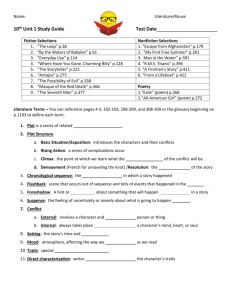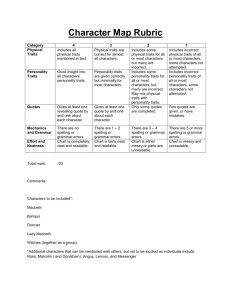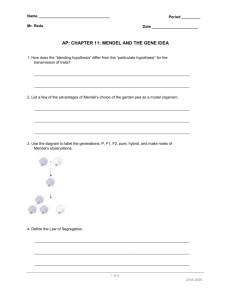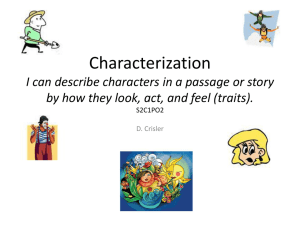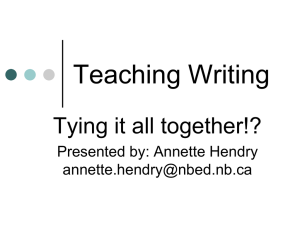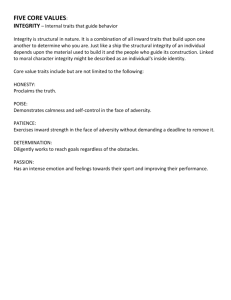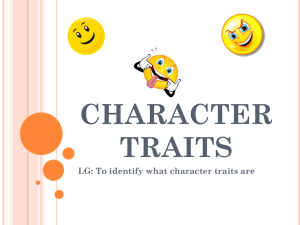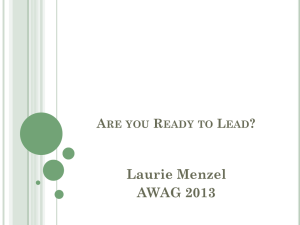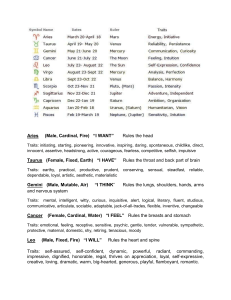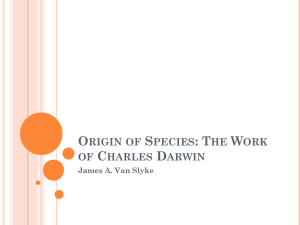DOE Summer Workshop 2014
advertisement
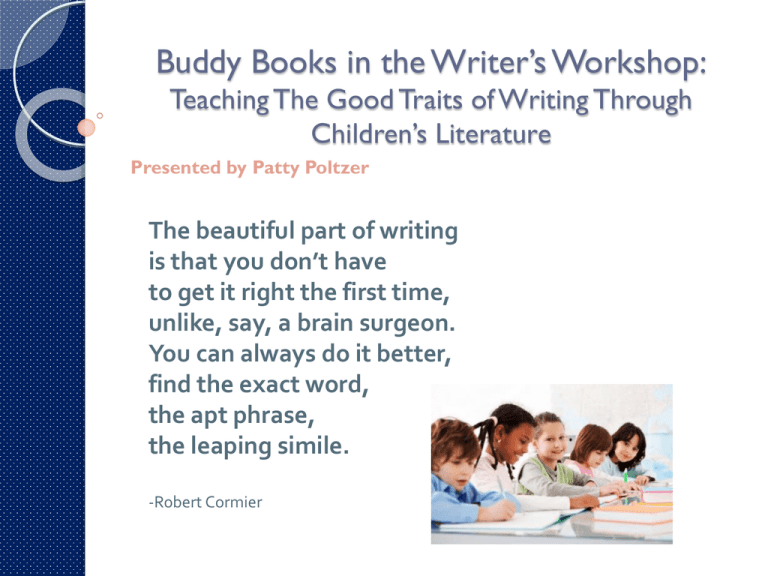
Buddy Books in the Writer’s Workshop: Teaching The Good Traits of Writing Through Children’s Literature Presented by Patty Poltzer The beautiful part of writing is that you don’t have to get it right the first time, unlike, say, a brain surgeon. You can always do it better, find the exact word, the apt phrase, the leaping simile. -Robert Cormier The Writer’s Workshop Model Schedule 3-5 days per week Whole Group (Mini lesson – Direct Instruction) 10-30 minutes Individual Writing Time (Status of the Class - Conferencing) 20-45 minutes Whole Group Authors Chair Share writing Presentations 5-15 minutes Whole Group Mini-lesson (10-30 minutes) Short & focused Writing process Standards Scope & Sequence Qualities of good writing (traits) Teach more than one strategy at a time Buddy Books Don’t reinvent the wheel May not necessarily direct the course of the writing component Read student cues and clues – what do they need? Writing Time (35-45 minutes) Begin with status of the class The meat of the workshop Ongoing projects Purpose for writing ◦ Often self-selected ◦ Sometimes assigned ◦ Opinion/Argument ◦ Informative/Explanatory ◦ Narrative Teacher floats discreetly Brief student conferences Anecdotal notes Teacher commentary ◦ Post-Its ◦ No red pen ◦ At least one positive Back to Whole Group (10-15 minutes) Sharing time ◦ ◦ ◦ ◦ Author’s chair Partner share Question & Answer Student creates schedule for next writing workshop ◦ Jots down questions for teacher (conference time) Wrap-up ◦ Ticket out the door ◦ Mini-lesson review ◦ Thoughts to ponder at home Organizing Writing Journal ◦ ◦ ◦ ◦ Mini Lesson notes Text Features Grammar Information students can access during individual writing time ◦ Differentiate: copies for students to glue into their journals Writing Folder ◦ Two-pocket folder (see example) ◦ Students keep track of their individual ongoing writing ◦ Hand-outs and assignments ◦ Published work Good Traits of Writing Ideas The content, or main theme The reason for your writing Informative explanatory Opinion Narrative The heart of the message Organization Gives the writing direction Moves the reader through in a purposeful way The internal structure of the writing Good Traits of Writing Voice The personal voice of the author comes through – YOU Gives the writing personality, flair, style – a sound all its own Word Choice The use of precise, colorful, and rich words to communicate your message The use of words to help you say exactly what you want - not come close - nail it! The Good Traits of Writing Sentence Fluency The writing flows with a rhythm and cadence Varied sentence length and style Purposeful sentence beginnings Linking words and phrases (transitions) Conventions The rules of language; ◦ Spelling ◦ Punctuation ◦ Grammar/usage ◦ Paragraphing ◦ Capitalization Writing Process Planning Good Writing Traits Revising Editing Publishing Ideas Organization Word Choice Voice Sentence Fluency Conventions (Language Standards) How do the good traits of writing fit into the writing process? Enough with theory… Show me what to do! Establish the standard/s and/or trait you will include in your lessons: ◦ ELACC3W3, 4W3, 5W3 Write narratives to develop real or imagined experiences… ◦ Ideas/Word Choice ◦ Character development (real or imagined) ◦ Dialogue and descriptions to show response of characters to situations ◦ Illustrations I Need My Monster by Amanda Noll Character Development Our Monsters Getting Started Choose any piece of writing (picture book, chapter book, newspaper, article, greeting cards, junk mail…) upon which to build your lesson Design a short writing activity that emphasizes the standard, skills and/or trait that you are teaching (The web is an amazing wealth of lesson ideas) Examples: ◦ Transitions for organization ◦ Details for ideas ◦ Verbs/adjectives for word choice Model the writing activity with the class (It’s not copying!) Sources and Resources Writing Workshop The essential guide By Ralph Fletcher Craft Lessons Teaching writing K-8 By Ralph Fletcher & Joann Portalupi Mechanically Inclined Building Grammar, Usage, and Style into Writer’s Workshop By Jeff Anderson After the End Teaching and Learning Creative Revision By Barry Lane Going Bohemian Activities That Engage Adolescents in the Art of Writing Well By Lawrence Baines & Anthony J. Kunkel Making Revision Matter Strategies for Guiding Students to Focus, Organize, and Strengthen Their Writing Independently By Janet Angelillo WritingFix.com (Northwest Region Professional Development Program) The Common Core Guidebook: Informational Text Lesson Grades 3-5 By Rozlyn Linder Sources and Resources Everyday Editing; Inviting Students to Develop Skill and Craft in Writer’s Workshop By Jeff Anderson Using Picture Books to Teach Writing With the Traits By Ruth Culham Northern Nevada Writing Project’s Writing Across the Curriculum Guide (2006 Edition) Available through WritingFix.org North Central Regional Education Laboratory (NCREL) Learning Under the Influence of Language and Literature By Lester L. Laminack and Reba M. Wadsworth Awakening the Heart ~ Exploring Poetry in Elementary and Middle School By Georgia Heard http://educationnorthwest.org/ (FKA Northwest Regional Education Laboratory) http://readwritethink.org (International Reading Association) http://daretodifferentiate.wikispaces.com http://www.ilovethatteachingidea.com Ttms.org Teaching That Makes Sense Questions?

